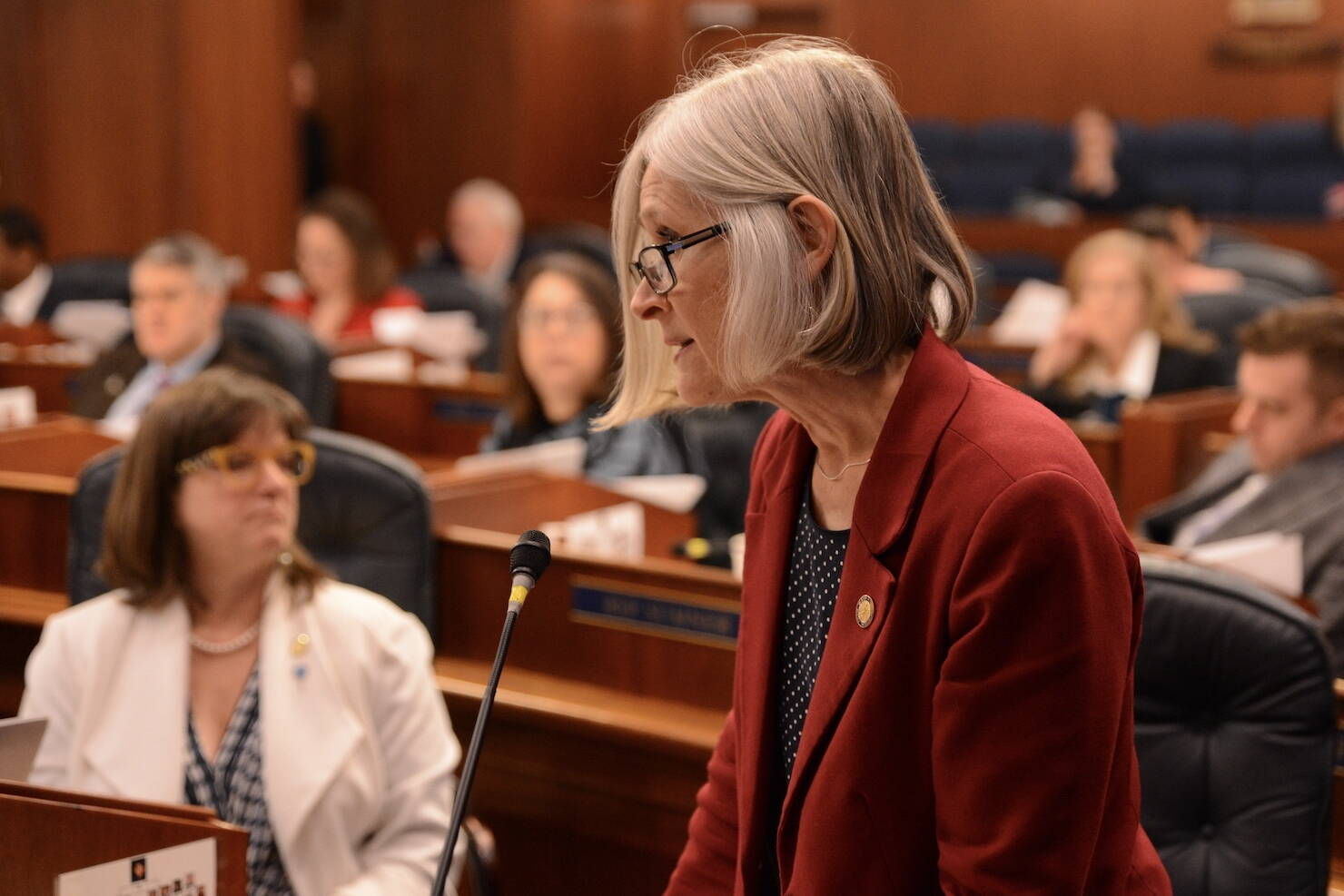Harbors owned and operated by Alaska’s cities and boroughs will be required to install safety ladders usable by someone who falls into the water.
On Wednesday, the Alaska Senate approved House Bill 345, which requires the ladders in all harbor projects that receive money from the state’s harbor facility grant fund.
Before the Senate voted 19-1 to pass the bill, it amended it to include part of a disaster-recovery measure from Sen. Jesse Kiehl, D-Juneau.
Rep. Andi Story, D-Juneau, sponsored the original bill. Speaking May 8, when the House voted 38-1 to approve the bill, she said she introduced it at the request of a constituent whose employee died in 2021 after being unable to climb back on a dock after going in the water.
“This bill is about saving lives,” she said.
Last year, the Alaska Section of Epidemiology released a study concluding that 20% of the state’s 342 drowning deaths from 2016 through 2021 were due to falls from a dock or boat.
One of those deaths was Anna Foltz of Juneau, who died in October 2021. In testimony submitted to the Legislature, one of Foltz’s friends said the person who investigated Foltz’s death concluded that had a ladder been present, she would not have died.
“My constituent felt that if there had been safety ladders on the dock, Anna would have been able to save themselves,” Story said.
She said the requirement will come at no cost to the state because municipalities will pay for the cost of the safety ladders out of the grants they’re already receiving.
If bought in bulk, Story said, the ladders cost about $210 apiece, and she believes the cost is not prohibitive.
The section of the bill added by the Senate allows condo owners who receive state disaster aid to use that money for collectively owned property, such as the foundation of a shared condo building.
Kiehl included that section in a larger disaster-aid bill that the Senate passed but the House failed to pass before the end of the legislative session.
Kiehl’s bill included the condo-related language after a glacier-caused flood heavily damaged several Juneau homes, including a set of condos, in 2023.
Kiehl’s bill also would have increased the state cap on disaster aid, but that provision was dropped because of cost concerns, he said.
That left the condo-related language, which guarantees equal treatment in state law between condo-owners and the owners of single-family homes, Kiehl said.
That was “the most essential part,” he said.
• James Brooks is a longtime Alaska reporter, having previously worked at the Anchorage Daily News, Juneau Empire, Kodiak Mirror and Fairbanks Daily News-Miner. This article originally appeared online at alaskabeacon.com. Alaska Beacon, an affiliate of States Newsroom, is an independent, nonpartisan news organization focused on connecting Alaskans to their state government.

